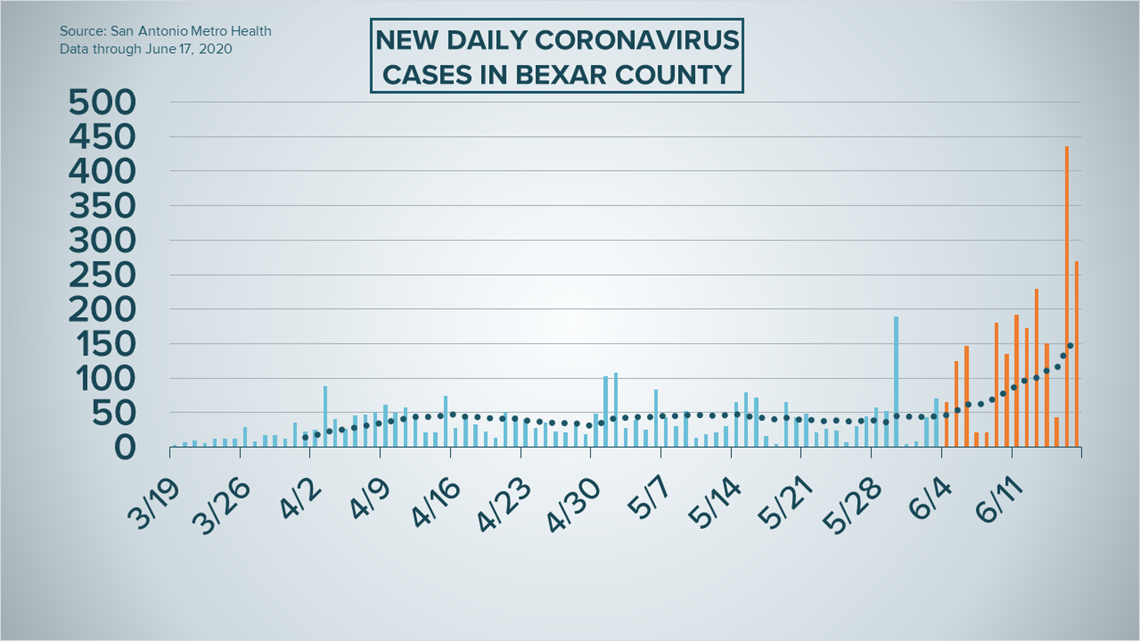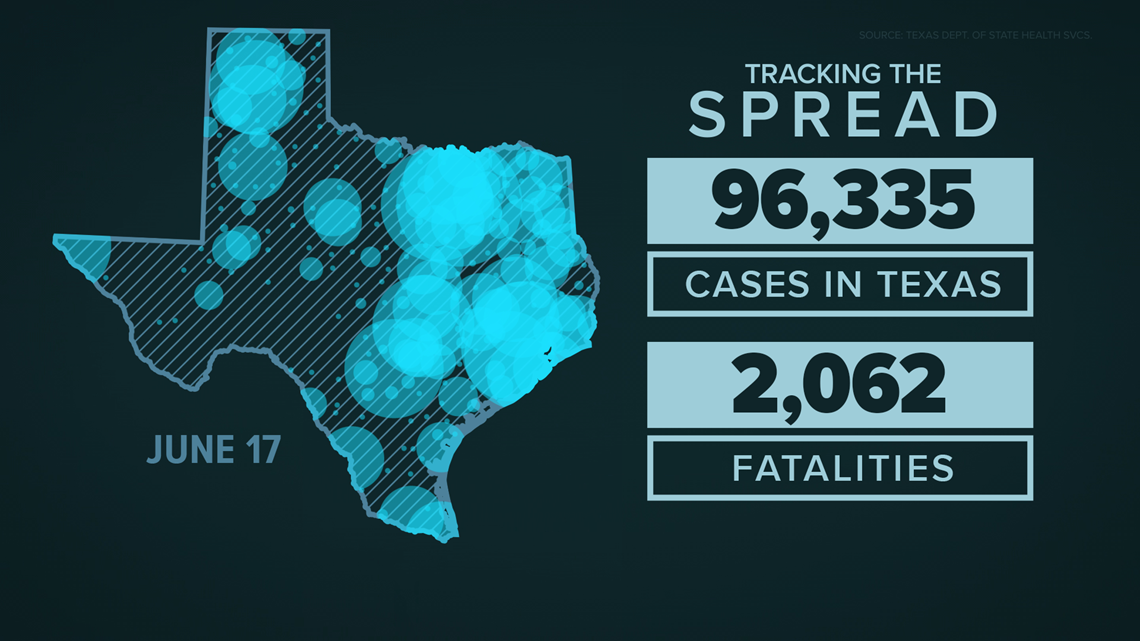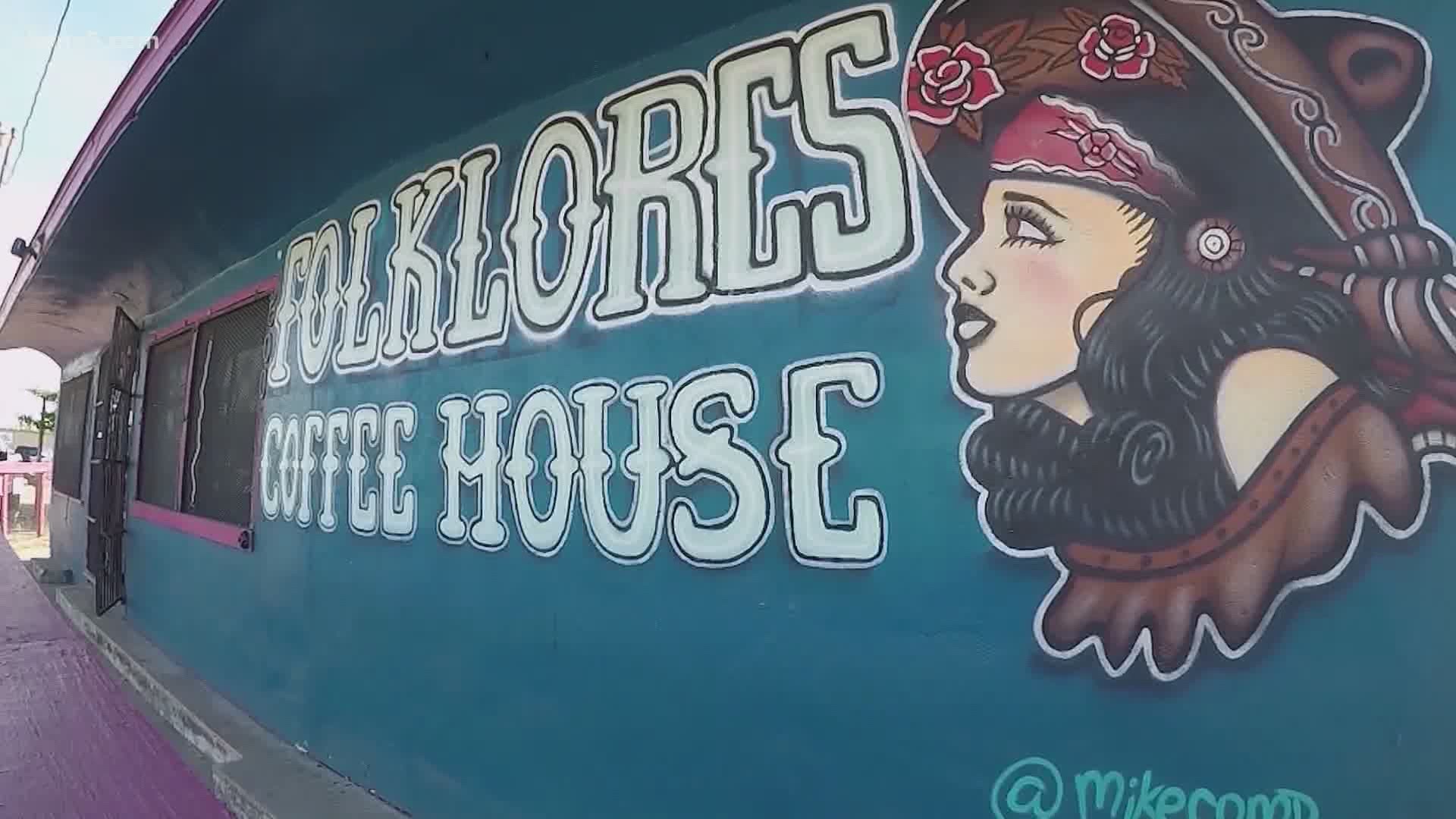SAN ANTONIO — We're tracking the latest numbers from the coronavirus pandemic in San Antonio and across Texas. Here are the latest numbers reported by Bexar and surrounding counties:
- Bexar County: 269 new cases and one new death were reported Wednesday; a total of 5,142 cases and 90 fatalities.
- Comal County: Ten new confirmed cases were reported Wednesday. The count's total has now risen to 207 confirmed cases with and additional 51 probable cases of coronavirus. Seven people have died in the county, while 142 have recovered.
- Hays County: 145 new cases Wednesday; a total of 1,238 cases and five fatalities in the county; eight additional recoveries were reported Wednesday, bringing the total number of residents recovered to 330.
Bexar County initially reported an additional 239 cases, on Wednesday evening, but later Increased it to 269. This is the second-highest daily increase yet behind only Tuesday's at 436.
Here are Wednesday's full numbers. Bexar County reports them daily at 7 p.m.:
How Bexar County is trending:
We're tracking how many coronavirus cases are confirmed in Bexar County each day from the time San Antonio Metro Health began reporting cases more than two months ago. Graphing those daily case numbers along a 14-day moving average provides an accurate picture of the curve in the San Antonio area and the direction we're heading amid the coronavirus.


Coronavirus in Texas
Cumulative cases in Texas jumped by 3,129 Wednesday, according to state health officials. Thirty-three more deaths from virus-related complications were also reported, for a total of 2,062.


Meanwhile, an additional 275 Texans were hospitalized with COVID-19 over the last 24 hours; 2,793 Texas residents are currently in the hospital with the virus, setting a new high for the state during this pandemic. Since Friday, a total of 627 Texans have checked into hospitals with the virus.
Here's a look at the 14-day moving average of the new daily coronavirus cases in Texas:


LATEST CORONAVIRUS HEADLINES:
- 27-year-old bouncer on ventilator as coronavirus cases spike in Texas, especially among younger people
- H-E-B stores in Bexar County to require masks after Judge Wolff's executive order
- Judge Wolff orders county businesses to create safety plan, including requiring face masks
- Texas bars and restaurants were eager to reopen. Now some are closing their doors again as coronavirus cases rise
- US airlines limit alcohol, food services on flights to limit COVID-19 spread
- Dynamic video shows how you expel air with and without mask
- VERIFY: Yes, you can join the military if you've had COVID-19 and recover
Coronavirus symptoms
The symptoms of coronavirus can be similar to the flu or a bad cold. Symptoms include fever or chills, cough, shortness of breath or difficulty breathing, fatigue, muscle or body aches, headache, new loss of taste or smell sore throat, congestion or runny nose, nausea or vomiting and diarrhea, according to the Centers for Disease Control.
Most healthy people will have mild symptoms. A study of more than 72,000 patients by the Centers for Disease Control in China showed 80 percent of the cases there were mild.
But infections can cause pneumonia, severe acute respiratory syndrome, kidney failure, and even death, according to the World Health Organization. Older people with underlying health conditions are most at risk.
The CDC believes symptoms may appear anywhere from two to 14 days after being exposed.
Human coronaviruses are usually spread...
- Between people who are in close contact with one another (within about 6 feet).
- Through respiratory droplets produced when an infected person coughs, sneezes or talks. These droplets can land in the mouths or noses of people who are nearby or possibly be inhaled into the lungs.
- Some recent studies have suggested that COVID-19 may be spread by people who are not showing symptoms.
Help stop the spread of coronavirus
- Stay home when you are sick.
- Eat and sleep separately from your family members
- Use different utensils and dishes
- Cover your cough or sneeze with your arm, not your hand.
- If you use a tissue, throw it in the trash.
Lower your risk
- Wash your hands often with soap and water for at least 20 seconds. If soap and water are not available, use an alcohol-based hand sanitizer.
- Avoid touching your eyes, nose, and mouth with unwashed hands.
- Avoid close contact with people who are sick.
- Clean and disinfect frequently touched objects and surfaces.
- The CDC recommends wearing a mask or cloth face covering if you have to be out due to an essential service or essential activity such as going to the grocery store.
- If you are 60 or over and have an underlying health condition such as cardiovascular disease, diabetes or respiratory illnesses like asthma or COPD, the World Health Organization advises you to try to avoid crowds or places where you might interact with people who are sick.

